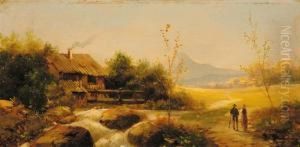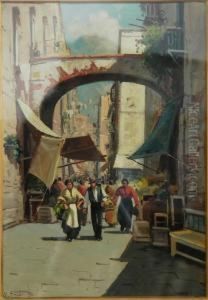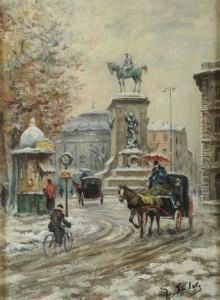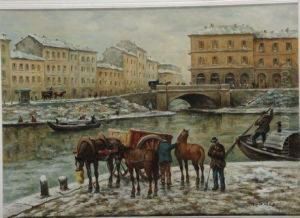G. Salvi Paintings
Giovanni Battista Salvi, known as Sassoferrato from his place of origin, was an Italian painter born in 1609 in the small town of Sassoferrato, in the Marche region of Italy. His father, Tarquinio Salvi, was a minor painter from whom Giovanni Battista initially learned the basics of painting. However, it was in Rome where Sassoferrato would find his true calling and develop the style that made him famous. Unlike many of his contemporaries, there is no record of Sassoferrato studying under any of the leading painters of his time. Instead, he absorbed the influences of the Roman and Bolognese schools of painting, particularly admiring the works of Raphael, the Carracci, and Guido Reni.
Sassoferrato's art is characterized by its devotional intensity, purity, and clarity, attributes that aligned well with the Counter-Reformation ideals dominating the Catholic Church's artistic commissions at the time. He specialized in religious subjects, producing a large number of Madonna and Child images that were noted for their serene beauty and meticulous detail. His use of color, profound sense of tranquility, and the polished finish of his paintings were much admired. Unlike the dramatic chiaroscuro and dynamic compositions of his Baroque contemporaries, Sassoferrato's work was marked by a return to a more conservative and classical approach, focusing on harmony and balance.
Sassoferrato's paintings were popular among collectors and the religious communities throughout Europe, and his works can be found in many major museums today. Despite his success, he chose to lead a quiet life, mostly spending his career in Rome, away from the courtly and papal patronage that many of his peers sought. He passed away in 1685, leaving behind a legacy that would influence not only the late Baroque period but also the emerging Rococo style. His devotion to the Madonna and Child theme has cemented his place as one of the era's most endearing religious painters. Sassoferrato's work, while not revolutionary, represents a bridge between the High Renaissance's ideals and the Baroque period's emotional depth, embodying a timeless appeal that continues to resonate with audiences today.



